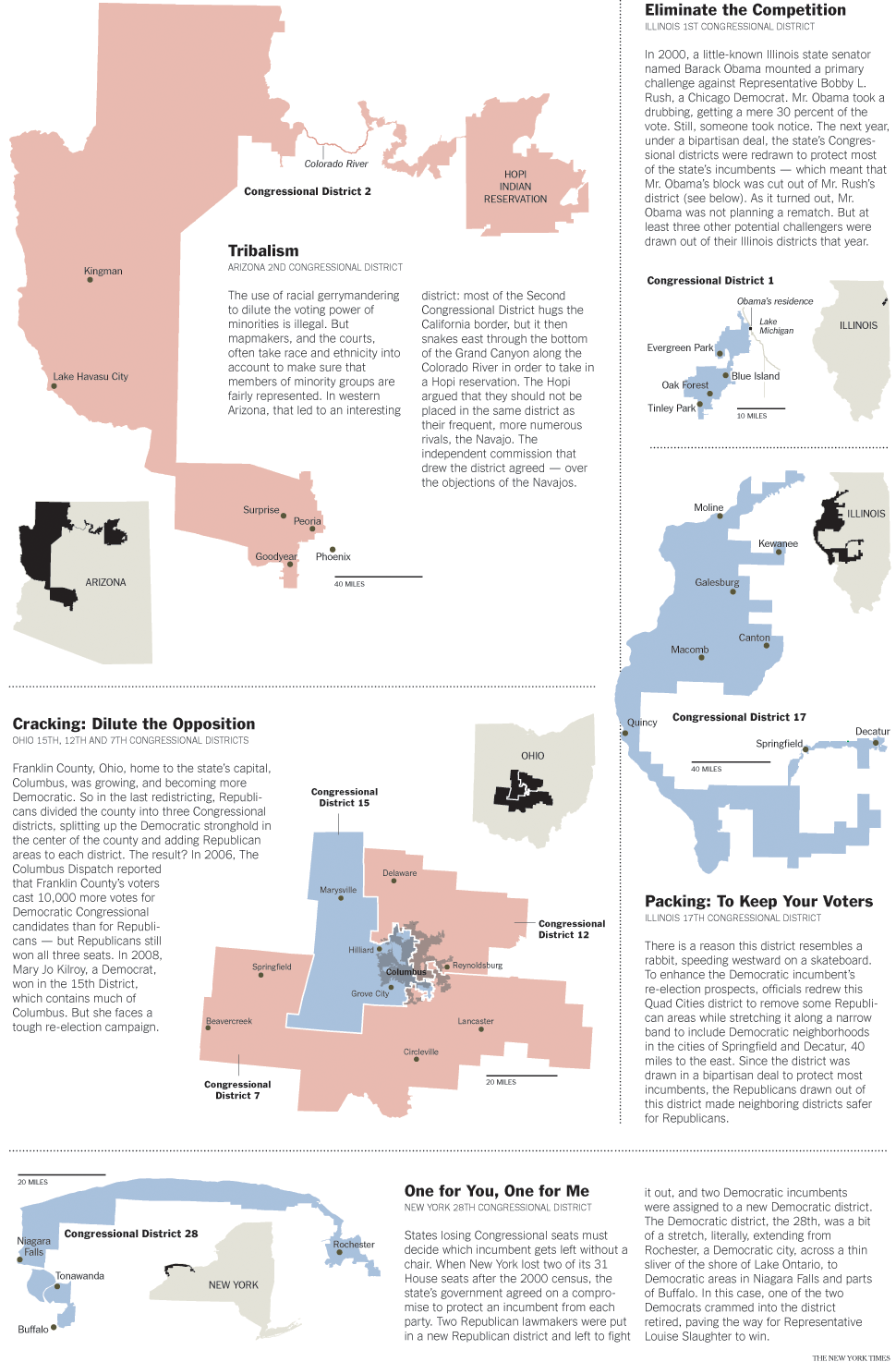How to Tilt an
Election Through Redistricting
Published: September 25, 2010 - New York Times
It was a gerrymander too ambitious for its own good.
When Pennsylvania lost two seats in Congress to the booming Sun Belt in 2000,
the Republicans who controlled state government redrew the map of Congressional
districts to pack Republican voters into as many districts as possible.
At first, the strategy worked. In the next election, the statefs delegation
shifted to 12 Republicans and 7 Democrats, from 11 Republicans and 10 Democrats.
Furious Democrats challenged the new map but the Supreme
Court upheld it.
Instead of drawing, say, 11 Republican districts with comfortable margins of
Republican voters, party strategists had tried to draw 12 or 13 Republican
districts, but with slimmer margins. As it turned out, those margins were a bit
too narrow, and, by 2006, Democrats had won those districts. The state now has
12 Democratic and just 7 Republican districts, the reverse of what the
Republican gerrymander originally accomplished. gThey took a risk, and it
backfired,h said Edward
G. Rendell, Pennsylvaniafs Democratic governor.
Now, with the 2010 census complete, Democrats and Republicans across the
country are preparing for another once-a-decade exercise in creative
cartography. To gain the upper hand in the next redistricting, Pennsylvania
Republicans are fighting to win back the governorfs mansion and the statefs
House of Representatives. Independent analysts say a Republican surge in
statehouses around the nation could leave them with the power to redraw as many
as 25 Congressional seats in their favor.
So what are the tricks of the trade? Why do so many districts end up as
misshapen Rorschach inkblots with nicknames like gthe Earmuff,h gthe Flying
Giraffe,h or, in the case of a State Senate district in upstate New York, gAbraham
Lincoln Riding on a Vacuum Cleanerh?
Both parties rely on sophisticated computer programs, savvy political
operatives and election lawyers to push their maps through the frequent court
challenges. But the basic principles of gerrymandering — known to the pros as
gpackingh and gcrackingh — are simple, and used often.
